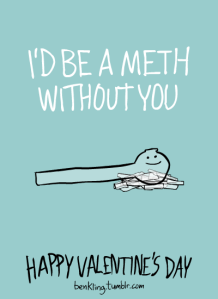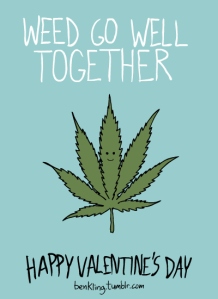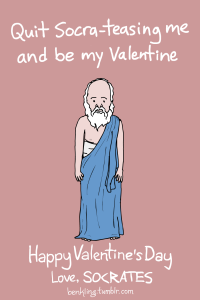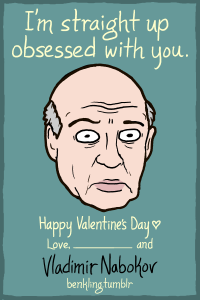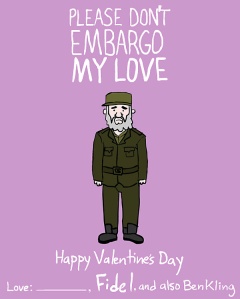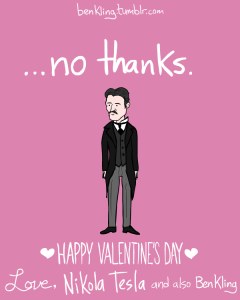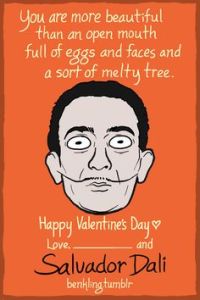Latest Entries »
and thank you so much to the person who shared it with me. that is dope.
I just returned from a 10 day Vipassana meditation. It was my first.
It was a deeply profound experience. It was both the best and the hardest thing I think I have ever done.
It is difficult to put into words an experience that by its very definition cannot be explained and must be experienced. It has been designed very deliberately to separate you from your daily life and distractions including banning all technology and communication with the outside world and even with your fellow meditators. This is so that you can venture into the depths of your being. It is the only way to get there. There have been 2500 years to figure this out.
First, let me tell you the facts. This is probably easiest.
Vipassana is a type of meditation taught by Gautama Buddha 2500 years ago. The technique existed before him, but he further developed it and it is his technique that is still taught today and is called Vipassana. Vipassana literally means seeing things as they really are. And this is what the technique helps you to do.
You are away for twelve days in total, but the meditation course itself is ten consecutive days. You arrive in the afternoon of day zero and that evening after a brief orientation and light meal you descend into noble silence which continues for the entirety of the 10 days. You hand over your phones and any electronic devices when you get there. There are no books, paper, pens or pencils allowed. Dress must be modest and loose fitting. Clothing is worn to cover shoulders, navels and knees. And there is no eye contact.
Everyone is on their own journey and even though we are all together, living in close quarters, everyone is working in isolation. The rules attempt to eliminate distractions. You are out in the middle of nowhere, deep in nature where the only sounds are of birds, crickets and the thunder in the distance. It is incredibly peaceful and crazily remote.
There are both men and women who attend the course – I believe 24 of each – and they are segregated to different parts of the property. Each gender has their own dorms, dining hall and outside areas. The only time the men and women are together is in the meditation hall. We are on opposite side of the hall, and because there is no eye contact and when we meditate our eyes are closed, we never see each other. You are vaguely aware of their presence on the other side of the property, but so engrossed in your work that you don’t really notice.

Your meals are prepared by volunteers, former students who are giving their time so that we may all have this experience. All meals are vegetarian and prepared with intention and love. And you can taste it. There are 2 meals a day and tea at dinner time. The schedule is rigorous. You wake at 4am and the first meditation of the day starts at 4:30, and with the exception of meals and a break to shower and rest, you meditate until 9pm. There are recorded discourses in the evenings with instructions about the technique given by S.N. Goenka who was both incredibly wise and very funny which, after a day of intense meditation is a breath of fresh air and helps to deflate the tensions that linger from a long day spent inside your head. Lights out at 9:30pm, and, at least for me, there was never any worry about sleeping because I was practically asleep before I hit my bunk, and I wasn’t alone, by 9:15 gentle snoring could be heard floating down the halls. Each day is more intense than the last and you are working HARD. It is like boot camp for the mind.
There are teachers that supervise the meditations, one woman for the women, and a man for the men. They are there if you need to ask questions (you are allowed to speak to them for this purpose), and each gender has a manager that they may speak to if they have any problems with logistics – not feeling well, problems with food or accommodations. Things like that.
It is strange to think about how 24 girls could live in extremely close quarters for 10 days in complete silence with no ability to communicate, but it is amazing how adaptable we are. We soon all fell into a rhythm, ebbing and flowing with the schedule, sharing a bathroom and eating our meals. Together, but alone.
I came to get a very good sense of the energy of all the girls in our pod. There were 8 of us. And it got so that I could feel them coming and going and could tell who was in the room without seeing them. It is amazing how much communicating you can do without words, and living closely with people for days you come to know what they need and what their habits are. This was fascinating to me.
In meditation hall this sensitivity to energy became amplified for me. I found that I could feel who was struggling and who was calm and in the zone so to speak. You draw strength from someone sitting near you who is focussed and solid in their practice and send energy to anyone you feel is really struggling. And this fluctuates all the time, changing minute to minute.

The first few days were tough. For me it was the schedule change. I have always been a night person and 4am is closer to my bedtime than the time I would ever consider getting up. Everything happens with the ringing of a gong which starts gently at 4am. I would crawl out of bed in complete darkness trying to be quiet and stumble outside where it was still the middle of the night and the stars still were out. I would quietly enter the meditation hall and find my cushion on the floor, (a spot is given to you on the first day and is kept for the duration), get comfortable and sit for 2 hours until breakfast. Then the gong would sound and everyone would quietly get up and move silently to the dining hall where we all peacefully eat breakfast. The dining hall was designed in such a way that you are never facing anyone, the entire experience is designed so that you can be alone and not be distracted. After breakfast three more hours of meditation until lunch at 11am. That is the last meal of the day, and the afternoon and evening schedule is hard core, with meditation from 1-5pm with a break for tea until 6, then meditation and the evening discourse until 9 by which point we were all so spent that we could barely make it back to our bunks before we were out cold. I slept like a corpse.
The first few days I was so exhausted that, strangely, it was a lot easier to pry myself out of my bunk at 4am and meditate, then crash out after breakfast until the next session, crash out after lunch until the gong and so on. I think I was just so tired that my body was on autopilot, and too tired to even be unhappy about it. It was about day 4 that I started coming out of the exhaustion and my head cleared. Interestingly, this is the day that they teach you the Vipassana meditation. Until then, you are doing what is called Anapana meditation in preparation for Vipassana which takes you deeper. We were told that day 4 and 6 are the hardest and when people tend to want to go home, or, as I think Goenka put it in his discourses – “run away”. For me, this is the day it got really REAL.

- S.N. Goenka
I never had the strong urge to run away, but I think that is only because I decided before I got there that I would surrender to it and let it take me where I needed to go. What I didn’t know is that it is YOU taking you where you need to go, and often where you don’t want to go. There is a purification that happens over the ten days, and it isn’t entirely pleasant. You are going deep inside yourself, and digging up old scars, hurts, anger, sadness, fear and other emotions that are still in there, long after the incident that caused them. They are things that we have been hanging on to, and if I understand it correctly, it is the hanging on that is allowing them to continually hurt us in the present, even if we are not consciously aware of it. The technique is allowing you to venture so deep that, at least for me, terrible, painful things are coming out, and it feels awful. But there is nowhere to go, nothing to distract yourself with, and this is the whole idea. You have to DEAL.
I was amazed at the things that were buried deep inside myself. The fears, the anxiety, they were overwhelming and several times I had uncontrollable urges to cry. I was not alone, and there were times people would be overcome with emotion. But the idea is, that you are doing a very deep surgery on yourself, trying to get at an infection, and when you finally reach it, you cut into it and all the pus comes flooding out. It feels awful, but you are cleaning out the wound. You are then able to apply healing balm to it, and let it heal while also learning how to live your life without acquiring any more infections, all the while allowing any remaining ills to come to the surface and be released. It is a healing purification on the most fundamental level.
The other thing that was interesting to me was what happens when you are in silence for a little while and out in nature. It makes you realize how loud the outside world is, that there are layers of noise and distractions around us at all times, and it isn’t until you take them away and be silent that something amazing happens. You begin to notice that everything alive and your natural environment has a hum that you can now hear. It is always there, but you have never been quiet enough to hear it before. Plants, insects, trees, the sky, everything has a hum, and it is like the most beautiful music – the music your ears were designed for. Every chance I got I would walk or sit outside. My mind became so focussed, I would watch colonies of ants, dragonflies or listen to birds speaking to each other in distant trees or the sounds of the wind sweeping through the landscape. I loved the silence that allowed these subtle sounds, and now that I know that they are there, I am looking forward to spending hours in forests, in the ocean and in trees listening. Quietly listening.

Another thing that I discovered is that my own body had a hum which I became aware of during the process. My body and I have always had a pretty good relationship, each respecting the other, but the silence in my world now brought this to a whole new level. I have always accepted that my body has an intelligence that far exceeds the one attributed to my brain, and that became even more apparent in the ten days of meditation. Your body will speak to you if you are quiet enough to hear it. It will tell you if something is right, or wrong if you learn the language it is using to communicate. This is a bit difficult to explain. If you know what I mean when I say a gut feeling, then it is similar to that, only more subtle. I was suddenly intimately aware of what my body needed, and if it was feeling bad, why. It is like discovering that your body is the best feedback mechanism for living the way you are supposed to – living your truth, whatever that is for you. For example, eating is hard for me until I am fully awake and that certainly doesn’t happen at 6:30 when we ate breakfast. The first couple of days I would try to eat but my body made it clear that if I tried to put anything into I would I spend the next few hours trying not to throw up (eww). So I had a chat with “myself”, explaining that I wasn’t trying to be cruel, but this was the time we had to eat and, if we didn’t take the opportunity we’d pass out with hunger by evening. This made a big difference and “we” compromised by eating a little granola with fruit. I am so glad that I had that time to make friends with my body again and reassure it that I am looking out for us and that I always have our collective interests at heart. In the real world, my day and life is ruled by my head and it often overrides what might be kindest for my body. I hope that in the future I can attain a little more balance.
I can’t speak to other people’s experience, but I found the entire process to be life changing. If you had asked me the first few days I would have had a different answer, and the days after that when I was in the depths of it I might have had a different opinion still, but it is going through the whole experience, beginning to end that allows you to see, to FEEL the complete picture. It is only after getting rid of all that darkness that you realize how terrible it was making you feel and how amazing you feel without it. And I know I felt this enormous gratitude for the fact that this place existed and that I was able to have this experience. The entire organization runs on donations, and they are all from students. There is no fund, or company set up to financially keep it going, the staff are all volunteers (former students) and all the money that keeps it operating is donated from students who have completed at least one course. I remembered thinking one day in one of the bazillion meditations that I was able to have this experience because a former student donated the money to allow it to happen. That was incredibly humbling.
This may seem strange or even impossible, but its true. It is all by donation. There are centres all over the world, with 9 in the United States and 5 in Canada. Also, in case some of you are wondering, there is no religion, no dogma, no rites or rituals. Everyone is welcome, no matter your race, where you are from or what you believe. It is a meditation technique, and its goal is to bring humanity out of its suffering and unhappiness, teach compassion and love for others so that we may all be happy, harmonious, peaceful beings. There is no purer thing in the whole world than that. And I know that I am incredibly grateful that it exists. I know that I got enormous benefit from it and I will be forever changed because of it, and my wish is that anyone who wants to be happy and live a peaceful life goes and has the experience as well. I wish it for all of you.

P.S.
If you are curious about Vipassana meditation and would like to watch an excellent documentary about it, watch
The Dhamma Brothers. It is a very inspirational story.

from the new york times
By MARK EPSTEIN
TALKING with my 88-year-old mother, four and a half years after my father died from a brain tumor, I was surprised to hear her questioning herself. “You’d think I would be over it by now,” she said, speaking of the pain of losing my father, her husband of almost 60 years. “It’s been more than four years, and I’m still upset.”
I’m not sure if I became a psychiatrist because my mother liked to talk to me in this way when I was young or if she talks to me this way now because I became a psychiatrist, but I was pleased to have this conversation with her. Grief needs to be talked about. When it is held too privately it tends to eat away at its own support.
“Trauma never goes away completely,” I responded. “It changes perhaps, softens some with time, but never completely goes away. What makes you think you should be completely over it? I don’t think it works that way.” There was a palpable sense of relief as my mother considered my opinion.
“I don’t have to feel guilty that I’m not over it?” she asked. “It took 10 years after my first husband died,” she remembered suddenly, thinking back to her college sweetheart, to his sudden death from a heart condition when she was in her mid-20s, a few years before she met my father. “I guess I could give myself a break.”
I never knew about my mother’s first husband until I was playing Scrabble one day when I was 10 or 11 and opened her weather-beaten copy of Webster’s Dictionary to look up a word. There, on the inside of the front cover, in her handwriting, was her name inscribed in black ink. Only it wasn’t her current name (and it wasn’t her maiden name). It was another, unfamiliar name, not Sherrie Epstein but Sherrie Steinbach: an alternative version of my mother at once entirely familiar (in her distinctive hand) and utterly alien.
“What’s this?” I remember asking her, holding up the faded blue dictionary, and the story came tumbling out. It was rarely spoken of thereafter, at least until my father died half a century later, at which point my mother began to bring it up, this time of her own volition. I’m not sure that the trauma of her first husband’s death had ever completely disappeared; it seemed to be surfacing again in the context of my father’s death.
Trauma is not just the result of major disasters. It does not happen to only some people. An undercurrent of trauma runs through ordinary life, shot through as it is with the poignancy of impermanence. I like to say that if we are not suffering from post-traumatic stress disorder, we are suffering from pre-traumatic stress disorder. There is no way to be alive without being conscious of the potential for disaster. One way or another, death (and its cousins: old age, illness, accidents, separation and loss) hangs over all of us. Nobody is immune. Our world is unstable and unpredictable, and operates, to a great degree and despite incredible scientific advancement, outside our ability to control it.
My response to my mother — that trauma never goes away completely — points to something I have learned through my years as a psychiatrist. In resisting trauma and in defending ourselves from feeling its full impact, we deprive ourselves of its truth. As a therapist, I can testify to how difficult it can be to acknowledge one’s distress and to admit one’s vulnerability. My mother’s knee-jerk reaction, “Shouldn’t I be over this by now?” is very common. There is a rush to normal in many of us that closes us off, not only to the depth of our own suffering but also, as a consequence, to the suffering of others.
When disasters strike we may have an immediate empathic response, but underneath we are often conditioned to believe that “normal” is where we all should be. The victims of the Boston Marathon bombings will take years to recover. Soldiers returning from war carry their battlefield experiences within. Can we, as a community, keep these people in our hearts for years? Or will we move on, expecting them to move on, the way the father of one of my friends expected his 4-year-old son — my friend — to move on after his mother killed herself, telling him one morning that she was gone and never mentioning her again?
IN 1969, after working with terminally ill patients, the Swiss psychiatrist Elisabeth Kübler-Ross brought the trauma of death out of the closet with the publication of her groundbreaking work, “On Death and Dying.” She outlined a five-stage model of grief: denial, anger, bargaining, depression, acceptance. Her work was radical at the time. It made death a normal topic of conversation, but had the inadvertent effect of making people feel, as my mother did, that grief was something to do right.
Mourning, however, has no timetable. Grief is not the same for everyone. And it does not always go away. The closest one can find to a consensus about it among today’s therapists is the conviction that the healthiest way to deal with trauma is to lean into it, rather than try to keep it at bay. The reflexive rush to normal is counterproductive. In the attempt to fit in, to be normal, the traumatized person (and this is most of us) feels estranged.
While we are accustomed to thinking of trauma as the inevitable result of a major cataclysm, daily life is filled with endless little traumas. Things break. People hurt our feelings. Ticks carry Lyme disease. Pets die. Friends get sick and even die.
“They’re shooting at our regiment now,” a 60-year-old friend said the other day as he recounted the various illnesses of his closest acquaintances. “We’re the ones coming over the hill.” He was right, but the traumatic underpinnings of life are not specific to any generation. The first day of school and the first day in an assisted-living facility are remarkably similar. Separation and loss touch everyone.
I was surprised when my mother mentioned that it had taken her 10 years to recover from her first husband’s death. That would have made me 6 or 7, I thought to myself, by the time she began to feel better. My father, while a compassionate physician, had not wanted to deal with that aspect of my mother’s history. When she married him, she gave her previous wedding’s photographs to her sister to hold for her. I never knew about them or thought to ask about them, but after my father died, my mother was suddenly very open about this hidden period in her life. It had been lying in wait, rarely spoken of, for 60 years.
My mother was putting herself under the same pressure in dealing with my father’s death as she had when her first husband died. The earlier trauma was conditioning the later one, and the difficulties were only getting compounded. I was glad to be a psychiatrist and grateful for my Buddhist inclinations when speaking with her. I could offer her something beyond the blandishments of the rush to normal.
The willingness to face traumas — be they large, small, primitive or fresh — is the key to healing from them. They may never disappear in the way we think they should, but maybe they don’t need to. Trauma is an ineradicable aspect of life. We are human as a result of it, not in spite of it.
i cannot overstate my respect and admiration for this man. he is such a brilliant observer of human behaviour that almost everything that falls out of his mouth makes me pee into my pants with its hilarity. seriously, it is ridiculous.

